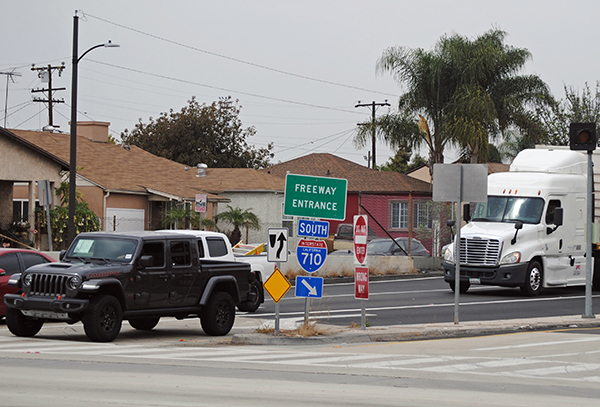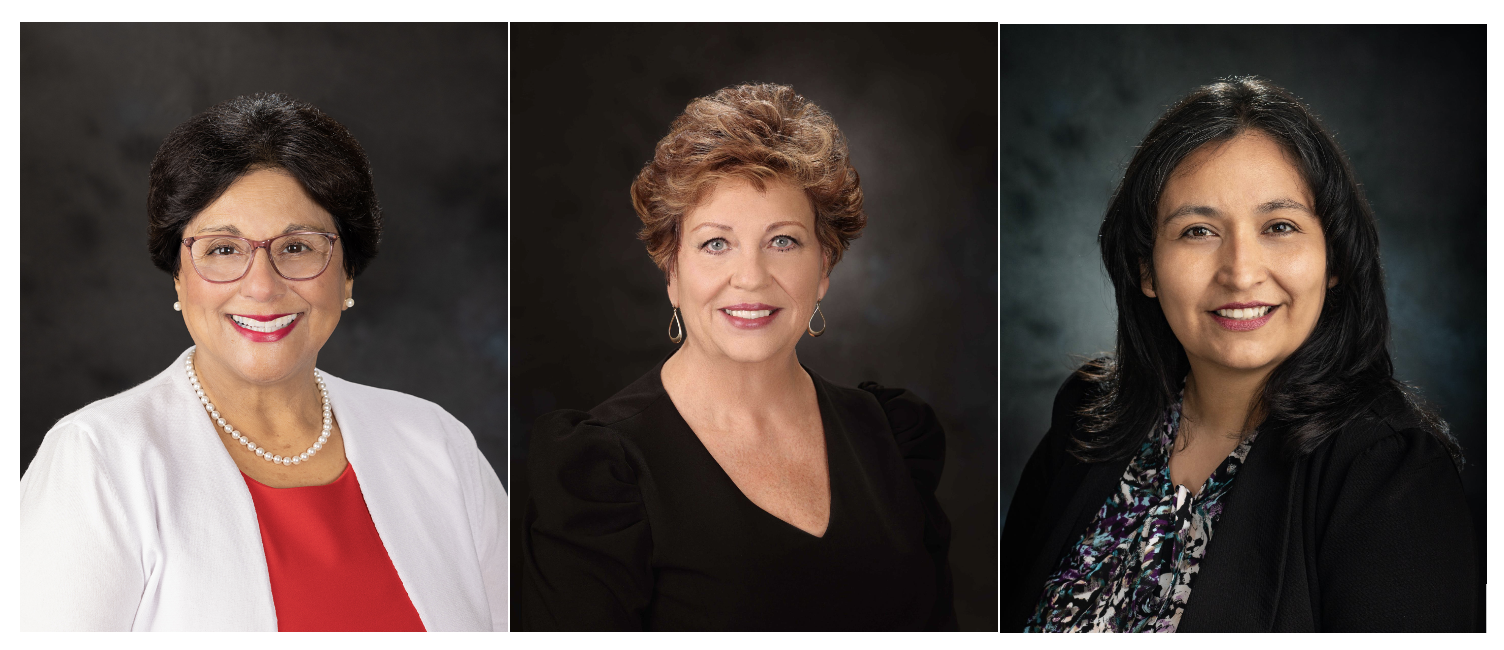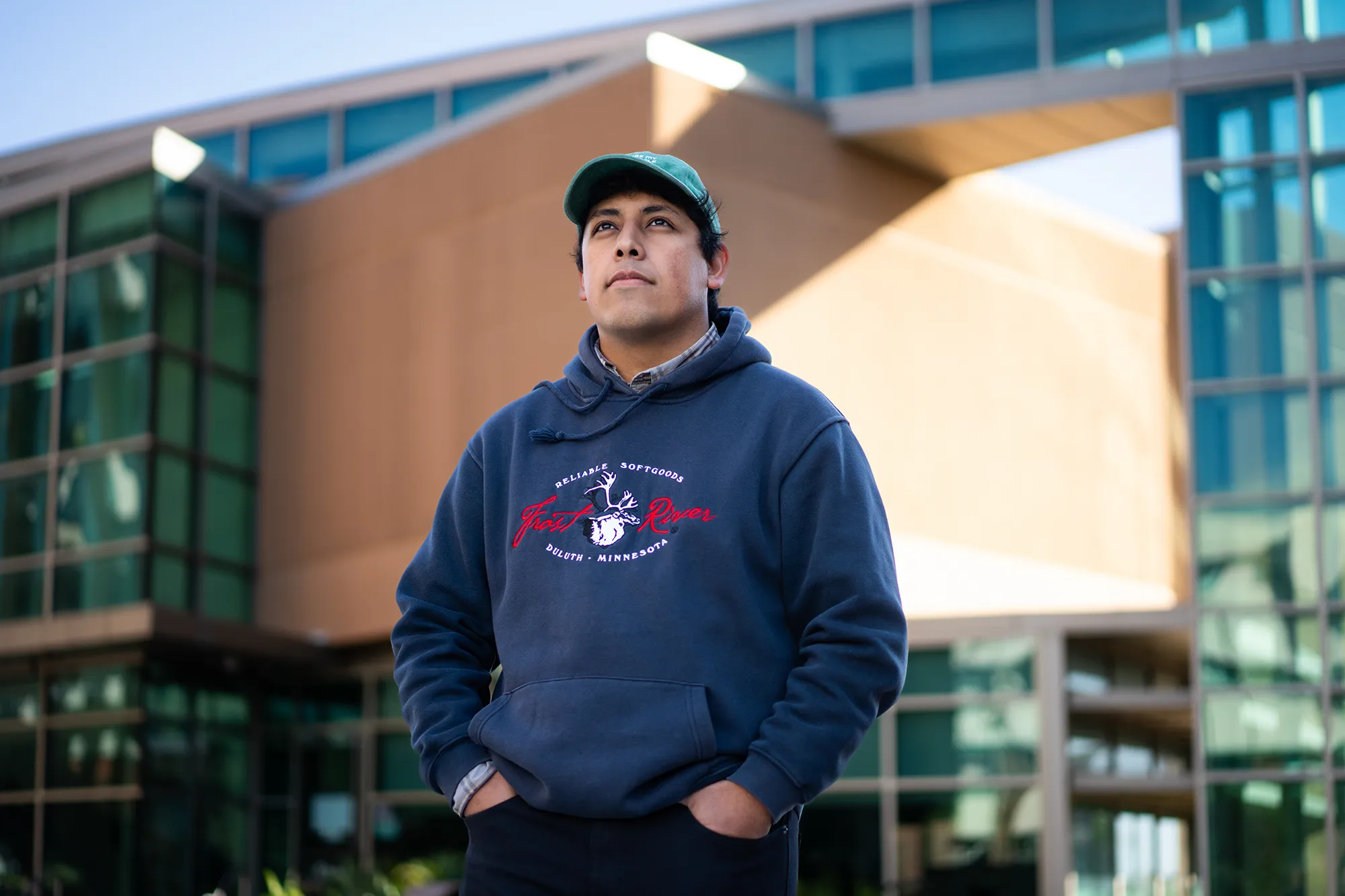By Alfredo Santana
Contributing Writer
LOS ANGELES — A split emerged among community leadership committee members during the panel’s first meeting March 31 on how to improve the Long Beach (710) Freeway corridor, with one member voicing support for reassigning six vacant seats to jurisdictions long impacted by emissions and cargo hauling, and another in favor of assigning them to missing cities.
Guadalupe Arellano, a committee leadership member and East Los Angeles resident, called for shifting vacancies from cities to stakeholders, including representatives from schools built within blocks of the freeway and communities more impacted by trucks and pollution.
“I live along the freeway and a lot of [people and pets] have died,” Arellano said. “I’m concerned that whenever an environmental impact report is canceled,” the potential for another would be tacked onto new projects.
Arellano gave credit to remarks by public participant Sofia Quiñones, who blasted efforts to reduce carbon emissions along the busy freeway and instead called for monetary compensation to families displaced when the freeway was being built between 1953 and 1965.
The Metropolitan Transportation Authority’s Highway Program Director Ernesto Chaves sought to assuage doubts that more environmental impact reports may be necessary to approve multimodal projects to improve air quality, public transportation and bike and pedestrian paths along the freeway corridor.
He reaffirmed the agency’s commitment to be inclusive in the process and recalled that the U.S. Environmental Protection Agency canceled the latest impact report last year because it sought to displace residents and businesses to widen freeway lanes.
“Previous plans that called for displacement of communities are gone,” Chaves said. “These [current] plans offer no displacements and lots of community engagement.”
For her part, committee leadership member Tiesha Davis refrained from reallocating empty slots, and called on MTA organizers to reopen recruitment efforts and contact Bellflower, East Rancho Dominguez, Lakewood, Montebello and Vernon about available positions on the committee.
Davis, a representative of the San Pedro-Wilmington area, said current members should not rush to reshuffle the positions.
“Keep the same criteria and intervene to try to get membership from those open jurisdictions,” Davis told her colleagues.
Davis’ colleague Martha Fierro seconded that idea, and pleaded to give residents from unrepresented cities another opportunity.
“Give a chance to the communities that did not provide a member to fill those seats. I think they should remain open,” Fierro said.
Meeting moderator and Here LA co-director Amber Hawkes reminded everyone that the selection process had closed, and the MTA and state Department of Transportation would have to issue another call in case committee members vote to redo the previous approach.
Communities like East Los Angeles and Long Beach were allocated three committee seats each to meet criteria on issues of equity and exposure to damages caused by decades of big rigs wheeling imported goods from the ports of San Pedro and Long Beach along the 710 freeway to distribution hubs east of Los Angeles along the Pomona (60) and San Bernardino (10) freeways.
Commerce only received one seat on the committee, despite having on- and off-ramps at Washington Boulevard heavily used by trucks and cars less than a block away from homes.
One block east from the busy intersection, containers are stored in lots without pavement, and brick and mortar mechanic shops repair trucks with diesel engines.
Three blocks away on East Washington Boulevard, trucks enter and exit a large distribution warehouse for grocery stores like Superior Markets and Super A Foods.
Another committee member, Jose Rodolfo Vallejo, asked to select bilingual candidates, and pitched that future light rail stations connecting the corridor be designed with bathrooms and feature a mix of vending machines or shops that sell coffee and drinks.
“I don’t see them as a luxury, but as a necessity,” Vallejo said.
In the end, the dynamics and decision to fill the empty positions were postponed until the next meeting April 21.
“Ideally, we’ll have a coordination about how to fill these seats and members will decide as we go on,” said meeting moderator and Here LA co-director Shannon Davis.
Eight of the 24 selected members failed to attend, or had problems with virtual connections that cut them off from speaking during the two-hour Zoom meeting. Those glitches rendered them unable to cast a vote in the selection of two coordinating committee posts.
Tiesha Davis and Viridian Preciado, a 22-year old student from Walnut Park, were unanimously voted on to the committee that will carry duties of sharing documents with all community leadership members, redacting reports and aligning work with other groups related to proposals of visions and goals.
Three task force members will also join the coordinating committee.
“I want to bring a fresh perspective to represent the youth communities of Walnut Park,” Preciado said of her dual committee membership.
Shannon Davis said that each attendee to community leadership gatherings will receive $200 per meeting, with no compensation for absences, and $50 for members in working groups.
KeAndra Cylear Dodds, executive officer of equity and race at the MTA, confirmed that a payment cap of $1,500 a year was set on community leadership members, with no limits for participants on two or more committees.
On the leadership committee ethnic composition, data issued from Hawkes indicates that 18 are Latinos, three are Blacks, and three are Asian Americans or Pacific Islanders.
She added that 436 people out of 3,000 responded to a study area survey before the March 30 deadline with questions on their vision for the freeway corridor.
“We’ve getting some great feedback with issues of concern,” Hawkes said.
Of the respondents, 53% said air quality was the most important issue at stake, 50.6% picked improvements to public and commercial transportation, 49.6% chose street safety and 42.8% selected the environment.
Community leadership member Kevin Smith said that funding for new projects should be paired with money for upkeep to avoid burdening cities with capital improvements while they run thinner budgets to provide local services.












